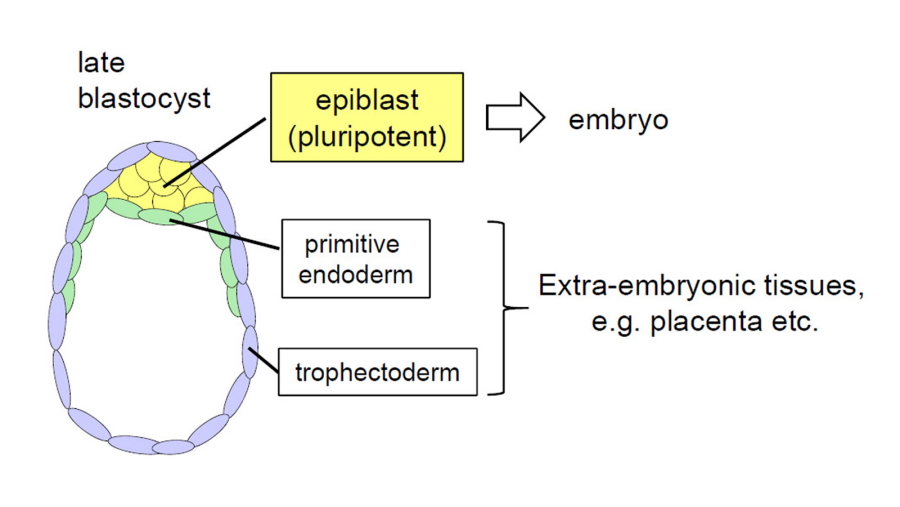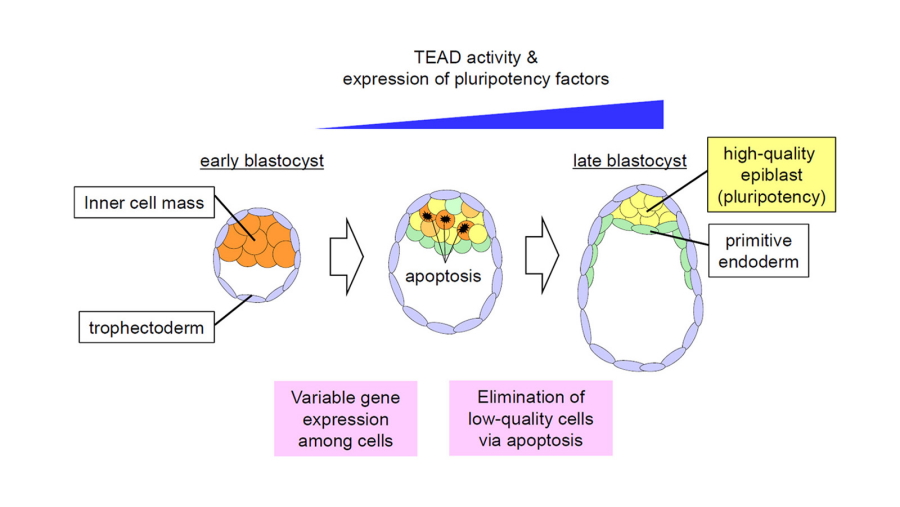Epiblast formation by TEAD-YAP-dependent expression of pluripotency factors and competitive elimination of unspecified cells
| Journal | Dev. Cell 50(2):139-154.e5 (2019) |
|---|---|
| Title | Epiblast formation by TEAD-YAP-dependent expression of pluripotency factors and competitive elimination of unspecified cells |
| Laboratory | Laboratory for Embryogenesis〈Prof. SASAKI Hiroshi〉 |
Abstract
The epiblast is a pluripotent cell population first formed in preimplantation embryos, and its quality is important for proper development. Here, we examined the mechanisms of epiblast formation and found that the Hippo pathway transcription factor TEAD and its coactivator YAP regulate expression of pluripotency factors. After specification of the inner cell mass, YAP accumulates in the nuclei and activates TEAD. TEAD activity is required for strong expression of pluripotency factors and is variable in the forming epiblast. Cells showing low TEAD activity are eliminated from the epiblast through cell competition. Pluripotency factor expression and MYC control cell competition downstream of TEAD activity. Cell competition eliminates unspecified cells and is required for proper organization of the epiblast. These results suggest that induction of pluripotency factors by TEAD activity and elimination of unspecified cells via cell competition ensure the production of an epiblast with naive pluripotency.

Fig. 1. Organization of a preimplantation mouse embryo (late blastocyst).
The pluripotent epiblast cells produce body of embryo. The mechanism, by which all the epiblast cells aquire high quality, has been unknown.

Fig. 2. Mechanism for production of high-quality pluripotent epiblast cells during preimplantation development.
Activation of the TEAD transcription factor in the inner cell mass induces strong expression of pluripotency factors, which is required for epiblast formation. Expression of pluripotency factors (= quality of pluripotency) in forming epiblast is highly variable among cells. Then, the quality-control mechanism, which eliminates low-quality cells via apoptosis, operates to produce high-quality epiblast.
| Authors | Masakazu Hashimoto (1), Hiroshi Sasaki (1)
|
|---|---|
| PubMed | 31204175 |
